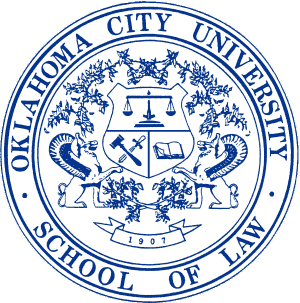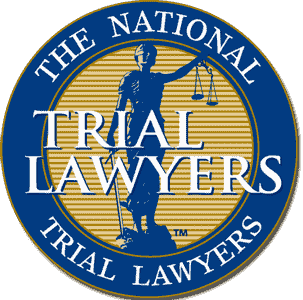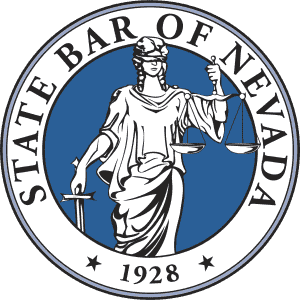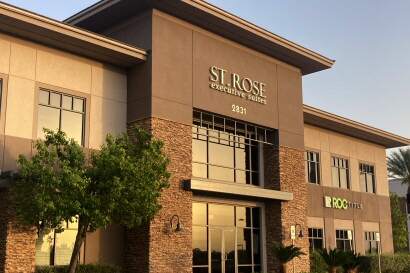ATTORNEYS FEES IN MEDICAL MALPRACTICE CASES
Estimated Reading Time: 13minutes

TOP FIVE THINGS TO KNOW WHEN HIRING A MEDICAL MALPRACTICE ATTORNEY
- The Fees Capped Nevada by Statute
- Hire an Experienced Attorney
- You only have one year, with some exceptions) to Bring your claim
- You need Your own Expert Before you File your Lawsuit
- You Will Need All of Your Medical Records
In 2004, Nevada, pursuant to Ballot question No. 3, implemented a statutory limitation on attorney’s fees in medical malpractice as a result of the tort reform bill that was passed into law by a vote upon of the people. NRS 7.095 prescribes the statutory allowable fees that attorneys can charge in medical malpractice cases. Therefore, the state legislature has determined what a reasonable fee is for a medical malpractice case. Courts in California have consistently and uniformly held that even with a valid, agreed upon, non-disputed waiver in place, the statutory provision regarding attorney’s fees is not waivable or “voidable.” An extensive review of the California decisions on this issue reveals the courts have consistently held that a comprehensive and extensive writing waiving the statutory fee limitation is still insufficient to void the statute. In fact, they have consistently ruled that the statute is not “voidable.”
NEVADA LAW REGARDING ATTORNEYS FEES FOR MEDICAL MALPRACTICE CASES
In Nevada, the State Legislature added NRS 7.095 to the Nevada Revised Statutes in 2004 pursuant to the passage of Ballot Question No. 3 passed on November 4, 2004, which states as follows:
NRS 7.095 Limitations on contingent fees for representation of persons in certain actions against providers of health care.
- An attorney shall not contract for or collect a fee contingent on the amount of recovery for representing a person seeking damages in connection with an action for injury or death against a provider of health care based upon professional negligence in excess of:
(a) Forty percent of the first $50,000 recovered;
(b) Thirty-three and one-third percent of the next $50,000 recovered;
(c) Twenty-five percent of the next $500,000 recovered; and
(d) Fifteen percent of the amount of recovery that exceeds $600,000.
2. The limitations set forth in subsection 1 apply to all forms of recovery, including, without limitation, settlement, arbitration and judgment.
3. For the purposes of this section, “recovered” means the net sum recovered by the plaintiff after deducting any disbursements or costs incurred in connection with the prosecution or settlement of the claim. Costs of medical care incurred by the plaintiff and general and administrative expenses incurred by the office of the attorney are not deductible disbursements or costs.
4. As used in this section:
(a) “Professional negligence” means a negligent act or omission to act by a provider of health care in the rendering of professional services, which act or omission is the proximate cause of a personal injury or wrongful death. The term does not include services that are outside the scope of services for which the provider of health care is licensed or services for which any restriction has been imposed by the applicable regulatory board or health care facility.
(b) “Provider of health care” means a physician licensed under chapter 630 or 633 of NRS, dentist, registered nurse, dispensing optician, optometrist, registered physical therapist, podiatric physician, licensed psychologist, chiropractor, doctor of Oriental medicine, medical laboratory director or technician, licensed dietitian or a licensed hospital and its employees.
(Added to NRS by 2004 initiative petition, Ballot Question No. 3; A 2011, 1510)
Although the Nevada Court has not specifically addressed the attorney fee provision, they have addressed the constitutionality of the statute and repeatedly followed precedent from the mirrored statute from California that has been in force since 1975.
CALIFORNIA LAW ON LIMITING ATTORNEYS FEES IN MEDICAL MALPRACTICE ACTION
Although the medical malpractice reform act was not passed in Nevada until 2004, the Medical Injury Compensation Reform Act of California (herein referred to as MICRA,) was enacted in California in 1975 by the California Legislature and signed into law by Governor Jerry Brown in September 1975. The act was intended to lower medical malpractice liability insurance premiums and was enacted on an emergency basis to keep healthcare providers as a whole financially solvent. It was intended to lower the cost of healthcare services and make them more available. Since MICRA was enacted nearly 40 years ago, it has been challenged on numerous occasions in the California Courts. It has repeatedly been held constitutional by the California Courts and almost all of the original MICRA legislation is still in force and effect and part of California law.
The Nevada statute is nearly identical to the California Statute. In California, non-economic damages are capped at $250,000 instead of $350,000 in Nevada. However, the California statute limiting attorney’s fees is almost identical to Nevada’s statue. Extensive litigation has gone on in California regarding the attorney’s fees provision under the MICRA statutory scheme. In California, plaintiffs’ attorneys can receive 40% of the first $50,000 recovered, 33 1/3% of the next $50,000 recovered, 25% of the next $500,000 recovered, and 15% of any amount recovered in excess of $600,000 under Business and Professions Code section 6146.
A RAND report issued estimates that as a result of MICRA, defendants’ liabilities were reduced by 30%. However, between 1985 and 1988 malpractice premiums actually rose 47% in California. After 1988 insurance premiums in California experienced a decrease which was a result of proposition 103. It was voted into law in 1988 at section 1861.01 of the California insurance code and explicitly required a rollback of insurance premiums by 20%.
( www.consumerwatchdog.org/documents/1008.pdf ) ( March 7, 2003)
New challenges were raised to MICRA by the plaintiffs’ bar after proposition 103 was enacted claiming that MICRA was outdated legislation and that the problem of increased premiums was resolved by proposition 103. The courts repeatedly declined to rollback or limit MICRA’S provisions after the enactment of proposition 103. (Cal Ins. Code Sec. 1861.01)
Nevada Origination of the Statute
Seeing the alleged success of this legislation in reducing insurance premiums for medical writers in California, other states started to follow suit. Nevada placed Question No. 3 on the ballot in 2004 and on November 4, 2004, it was ratified by a 60% majority of Nevada voters. Question No. 3 set a maximum schedule for attorney’s fees and capped non-economic damages at $350,000. The question, known as the KODIN initiative for keep our doctors in Nevada, was promoted by pointing to an alleged trend of Nevada doctors fleeing the state for states with lower malpractice premiums like California. To counter this legislation the Nevada plaintiffs’ bar put Questions No. 4 and 5 on the same ballot. Both were defeated in the election and the statutory scheme was voted into law by the Nevada public and became law in the state in 2004.
NEVADA CASE LAW
In Tam vs. The Eight Judicial District Court, 131 Nev., Advance Opinion No. 66346, (2015) the Nevada Supreme Court upheld the constitutionality of NRS 41A.035 (2004). In the Tam case, the Supreme Court granted a writ of mandamus on behalf of Dr. Tam challenging the district court’s ruling the state statute was unconstitutional in medical malpractice actions. In the opinion which is decided on a writ, the Nevada Supreme Court resolved three primary issues related to the statute:
- Whether the statue violates a Plaintiff’s right to a trial by jury;
- Whether the cap applies separately to each cause of action;
- Whether the statute applies to medical malpractice actions.
The Supreme Court held that the district court erred in finding the statute was unconstitutional on the basis that it violated the plaintiff’s constitutional right to trial by jury. The court further held that the district court erred when it found that the statutory cap applied per plaintiff and per defendant. Finally, the Supreme Court also concluded that the District Court erred when it found the statute applied only to professional negligence and not medical malpractice.
The underlying facts of the case involved the death of Charles Thomas Cornell, Jr. an action brought by his wife Sherry Cornell, the real party in interest. Mr. Charles had multiple medical conditions and he passed away after being released from the hospital and alleged he was not prescribed medications and further care to treat his diabetes. Suit was filed against numerous defendants after Mr. Cornell‘s death. Relevant to the opinion was the writ of mandamus filed regarding the ruling on Defendant’s omnibus motion in limine. The motion filed by Dr. Tam requested that non-economic damages be limited to $350,000 pursuant to the statute NRS 41 8.035. The District Court denied the motion finding the statute was unconstitutional and violated Plaintiff’s constitutional right to a trial by jury. The District Court, also held that the statutory cap did not apply to the case as a whole and that a separate cap applies for each plaintiff and for each of the defendants. In addition, the District Court found the cap did not apply to medical malpractice claims. Based on that motion in limine, relief under a writ of mandamus was sought and granted.
Among other things, the Supreme Court held that for a statute to violate the right to jury trial, it must make the right practically unavailable. They relied upon Barrett vs Baird 111 Nev. 1496, 1502, 908 P 2d 689, 694 (1995) The Supreme Court acknowledged that jurisdictions disagree on whether statutory damages caps violate the right to a trial by jury. They stated that they have previously found that a statutory limit on damages does not infringe on the plaintiff’s constitutional right.
In Arnesano vs State Department of Transportation 113 Nev. 815, 819, 942 P 2d 139, 142, (1997), the court relied upon the case of Martinez vs Maruszczak, 123 Nev. 433, 168 P. 3d 720 (2007) and held that “it is not the role of a jury to determine the legal consequences of its factual findings… That is a matter for the legislature. “ Id at 819-820, 942 P. 2d at 152 quoting Boyd vs Bulala 877 F. 2d 1191, 1196 (4th Cir. 1989). The Nevada Supreme Court looked to California for guidance. This issue has been decided in California in addressing the constitutionality of the statutory cap on non-economic damages in cases involving healthcare provider’s professional negligence. In Citing Yates vs Pollock, 239 Cal Rpt. 383, 385 (Ct. App 1987) the court concluded “that such an argument is merely an indirect attack upon the legislatures power to place a cap on damages. The Yates court noted that while the statute could possibly result in a lower judgment of the jury’s award, “the legislature retains broad control over the measure of damages a defendant is obligated to pay and that a plaintiff is entitled to receive… and it may expand or limit recoverable damages so long as it’s action is rationally related to legitimate state interest.“ Yates at 385–386
The Nevada Supreme Court in Tam went on to state that “consistent with our prior holding in Arensano and persuasive case law from California, “we conclude that NRS 41A.035 does not interfere with the jury in their factual findings because it takes affect only after the jury has made its assessment of damages and that it does not implicate a plaintiff’s right to trial by jury.”
The court went on to hold that the statute also did not violate equal protection rights and also relied on California holdings on this issue. The court further held that “we do not look beyond the language of the statute if it is clear on its face“ citing Beazer Homes Nevada Inc. vs Eighth Judicial District Court 120 Nev. 575, 579, 97 P. 3d 1132, 1135, (2004.) In this instance, the Tam decision did not address the attorney fee portion of the statute, NRS 7.095, although the provision is very clear on its face.
Also discussed by the Supreme Court in the Tam decision is the legislative history which they acknowledged discusses a comparison between the Nevada statute and California’s analogous statute noting “that NRS 41A.035 is similarly per incident not per claimant, and not per doctor.” The court also held that “the official explanation to ballot question No. 3 stated that the previous statute provided that a person seeking damages in a medical malpractice action is limited to recovering $350,000 in non-economic damages from each defendant and the proposal, if passed, would limit the recovery of non-economic damages to $350,000 per action” (Citing Nevada ballot questions 2004, question No. 3, explanation at 14 available at HTTPS://www.leg.state.nv.us/Division/Research/VoteNV/BallotQuestions/2004.pdf2004. )
The court in Tam went on to state “the intent behind the statute is further evidenced by the legislature is discussion of recent amendments to NRS 41A.035, indicating that the purpose of the 2004 amendments was to clarify that the cap for non-economic damages is intended to apply per action. “ (See Hearing on SB 292 before the Senate Judiciary Comm, 78th Leg. (Nev., March 26, 2015). It is clear from this decision that the Nevada Supreme Court found this legislation to be constitutional. It is also clear that they looked to California for guidance in mirroring their statute and will likely look to California for guidance in its further application.
As attorneys, the people sitting next to us are the clients we are here to protect. Their rights are paramount. It is our duty as lawyers to advise them and to counsel them to allow them to knowingly make decisions that affect the outcome of their cases. Lawyers are charged with the ethical duty of advising their clients of the law in many situations. Whether it’s a plea agreement in a criminal matter, whether it’s a bankruptcy, whether it’s this case where the statute at issue was voted on by the people and enacted into law, it is the responsibility of counsel to explain to clients that the law allows them to make decisions for the outcome of their case.
Although the supreme court in the state of Nevada has not ruled on this specific attorney fee issue under the reform statute, the ruling in the Tam case is clear that they find the statutory provisions to be constitutional. The Nevada Supreme Court has looked to our sister state of California in reviewing the constitutionality of the Nevada act’s provisions, which mirrors the California legislation. It is important for attorneys to be clear and accurate in advising clients of their rights. At the Law Offices of Laura Payne-Hunt, we take the time to meet with every client and take pride in explaining the law and their options in detail. I operate a small, boutique law firm specializing in giving personal representation to each client.
If you or a loved one has been injured as a result of poor medical care, call our office immediately. We can make sure that you receive the care you need and deserve, and advise on how to preserve evidence. If you have been in any type of accident and have questions, please don’t hesitate to contact our offices today. At my office, we are experienced in helping injured victims get the compensation they are entitled to. Insurance companies never have the best interest of the injured person at the top of their priorities. They want to pay as little on every claim as possible. Having worked for an insurance company as an attorney for 9 years before opening my boutique law firm specializing in helping injured people, I reviewed thousands of auto accident claims and policy provisions.
At the Law Offices of Laura Payne-Hunt we are here to help you and your family in the event that accidents and tragedies occur. For any of your legal needs, do not hesitate to contact our offices. The Law Offices of Laura Payne Hunt is a boutique, family owned law firm in Henderson that specializes in helping injured people and the community with legal issues involving auto accidents, wrongful deaths, slip and falls, truck accidents, injuries to children, bicycle accidents, dog bites, and all types of injury claims. Please do not hesitate to call us anytime you have a legal question or you or a loved one has sustained an injury at 702-450-(HUNT) 4868 and text 24/7 at 702-600-0032.










